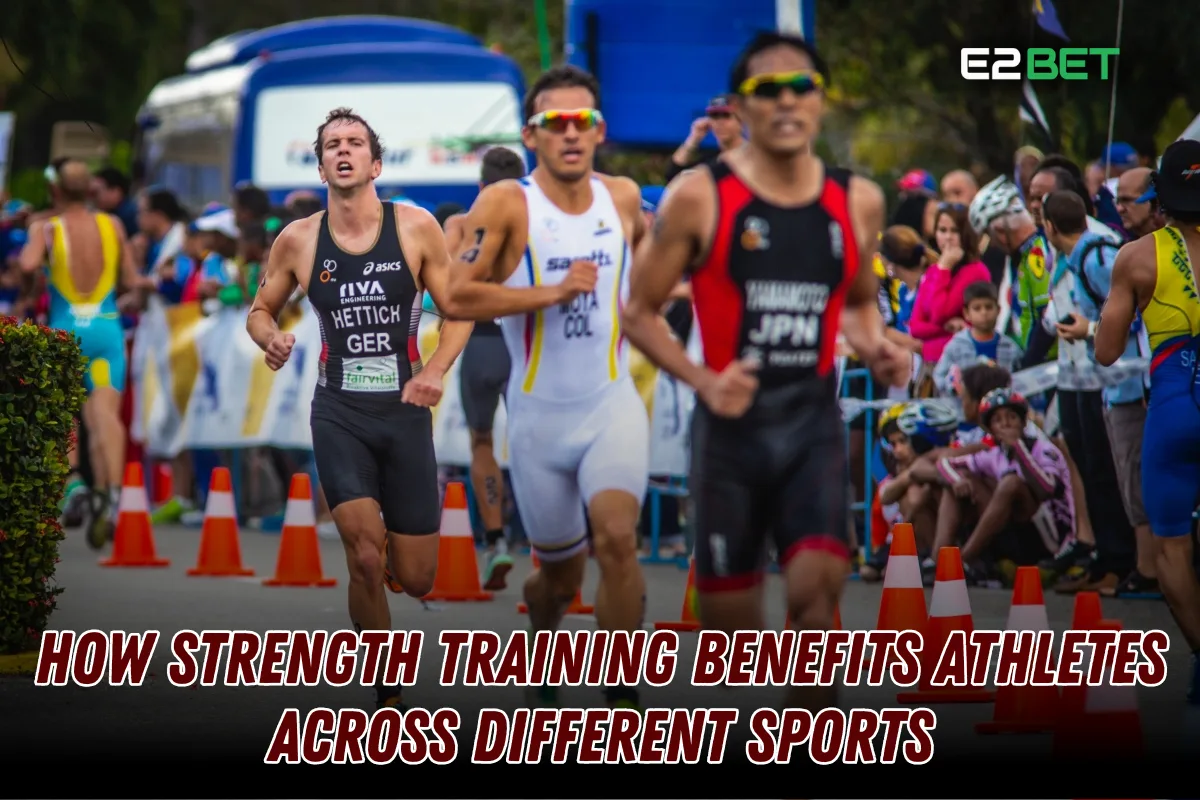Strength training is a crucial component of an athlete’s regimen, offering numerous benefits across various sports. Whether you’re looking to improve sports performance, enhance muscle strength, or reduce the risk of injuries, a well-structured strength training program can help. This article will explore how strength and endurance workouts benefit athletes and why resistance training is essential for success.
What is Strength Training?
Definition and Fundamentals
Strength training involves exercises designed to improve muscle power, endurance, and agility. This includes:
- Weightlifting – Using free weights or machines for strength conditioning
- Bodyweight Exercises – Push-ups, squats, lunges for functional strength
- Resistance Training – Bands, medicine balls, and cables for athletic performance
- Explosive Power Training – Plyometrics and Olympic lifts for agility and speed enhancement
Why Strength Training is Essential for Athletes?
Enhancing Performance
A structured strength training program helps athletes boost muscle endurance, allowing them to sustain high-intensity activities for longer periods.
Preventing Injuries
Stronger muscles, joints, and ligaments lower the chances of sports-related injuries, keeping athletes at their peak.
Increasing Endurance and Stamina
By engaging in strength and endurance workouts, athletes can delay fatigue, improve core stability, and maintain energy levels throughout their performance.

Strength Training for Different Sports
Strength Training for Football Players
- Building Explosive Power – Squats, deadlifts, and plyometrics help improve speed and agility.
- Injury Prevention – Strengthening stabilizing muscles reduces injury risk.
- Key Exercises – Power cleans, sled pushes, and resistance sprints for muscle strength.
Strength Training for Basketball Players
- Improving Vertical Jump – Plyometrics and leg strength workouts enhance jump height.
- Agility & Quickness – Strength training improves reaction time.
- Best Exercises – Box jumps, weighted lunges, and medicine ball throws.
Strength Training for Soccer Players
- Lower Body Strength – Squats and lunges enhance endurance and agility.
- Core Stability – Essential for balance and ball control.
- Recommended Exercises – Bulgarian split squats, deadlifts, and plank variations.
Strength Training for Swimmers
- Upper Body Strength – Pull-ups and lat pulldowns aid stroke efficiency.
- Core Engagement – Improves rotation and stroke mechanics.
- Resistance Training – Helps build endurance and power.
Benefits of Strength Training for Athletes
Increased Muscle Power and Explosiveness
Strength training activates fast-twitch muscle fibers, crucial for sports performance improvement.
Enhanced Endurance and Stamina
Training with resistance and weightlifting helps an athlete maintain energy levels over time.
Injury Prevention and Faster Recovery
Strength training strengthens ligaments and tendons, reducing injury risk and aiding in post-injury rehabilitation.
Improved Speed and Agility
Stronger legs and core muscles improve acceleration, reaction time, and movement efficiency.
Better Mental Toughness and Focus
Strength training builds resilience, enhancing confidence and motivation.
Common Myths About Strength Training for Athletes
Strength Training Makes Athletes Bulky
Truth: Proper strength and endurance training enhances power and agility without excessive bulk.
Strength Training Reduces Flexibility
Truth: Correct training improves mobility and flexibility.
It’s Only for Bodybuilders
Truth: Strength training programs are beneficial for all athletes, not just bodybuilders.
How to Incorporate Strength Training into Sports Training?
- Training Frequency – 2-4 days per week, depending on sport and position.
- Workout Routines – A mix of strength, endurance, and agility exercises.
- Combining Strength with Skill Training – Balance between sport-specific drills and strength training.
Conclusion
Strength training is a game-changer for athletes across all sports. Whether you’re a football player, swimmer, or runner, integrating strength and endurance workouts into your routine will boost performance, reduce injuries, and improve overall athletic abilities. Start incorporating weightlifting, resistance training, and agility drills today to take your game to the next level!
FAQs
Q1. What is the best age for athletes to start strength training?
Ans. Athletes can begin light strength and endurance training as early as 10-12 years old under supervision.
Q2. Can strength training improve flexibility?
Ans. Yes! Strength training exercises enhance flexibility and mobility when performed correctly.
Q3. How often should athletes engage in strength training?
Ans. Ideally, athletes should train 2-4 times per week, depending on their sport.
Q4. Does strength training help with injury recovery?
Ans. Yes, it strengthens muscles and ligaments, aiding in faster recovery and injury prevention.
Q5. What are the best strength training exercises for beginners?
Ans. Bodyweight exercises like squats, push-ups, lunges, and resistance band workouts are great for starters.